| Key Takeaways |
|---|
| Optimal room temperature for sleep falls between 65-68°F (18-20°C). |
| Core body temperature needs to drop by about 2-3 degrees Fahrenheit to initiate sleep. |
| Optimal room temperature for sleep plays a crucial role in both falling asleep and staying asleep throughout the night. |
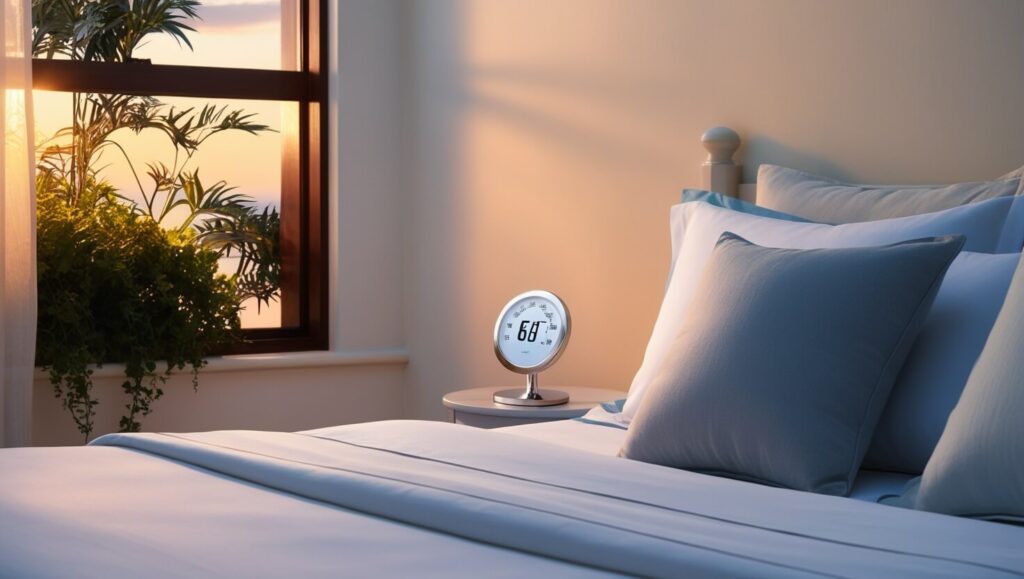
Temperature’s Role in Sleep Quality
The relationship between room temperature and sleep quality runs deeper than most people realize. Through extensive research and sleep studies, scientists have discovered that maintaining the optimal room temperature for sleep plays a crucial role in both falling asleep and staying asleep throughout the night.
The Science Behind Temperature and Sleep
Our bodies follow a natural temperature rhythm that’s intimately connected with our sleep-wake cycle. Core body temperature needs to drop by about 2-3 degrees Fahrenheit to initiate sleep, making the optimal temperature for sleep a critical factor in this process.
The Ideal Temperature Range
Research consistently shows that the optimal room temperature for sleep falls between 65-68°F (18-20°C). This temperature range supports the body’s natural cooling process that occurs during sleep initiation and maintenance.
How Temperature Affects Sleep Cycles:
- Initial Sleep Phase: Body begins cooling
- Light Sleep: Temperature continues dropping
- Deep Sleep: Lowest body temperature
- REM Sleep: Slight temperature fluctuation
Temperature Impact on Sleep Quality
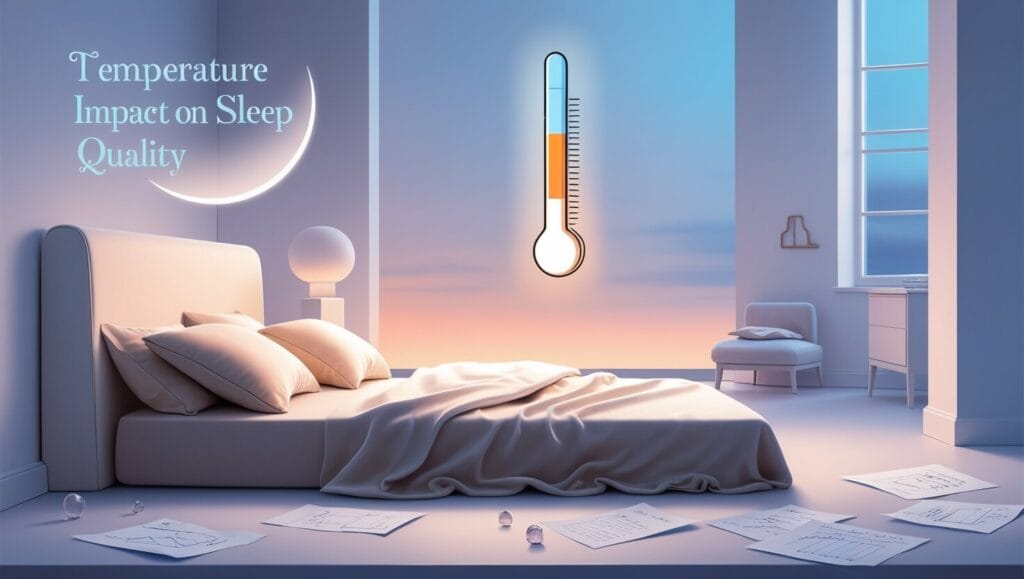
Sleep Onset: Maintaining the right temperature for sleep helps reduce the time it takes to fall asleep. When your bedroom is too warm or too cold, your body must work harder to achieve the temperature drop necessary for sleep initiation.
The relationship between temperature and sleep quality affects every stage of our sleep cycle. When the optimal room temperature for sleep isn’t maintained, our bodies struggle to regulate internal temperature effectively, leading to disrupted sleep patterns.
Deep Sleep and Temperature
During deep sleep phases, our body temperature reaches its lowest point of the 24-hour cycle. Research shows that maintaining the optimal temperature for sleep becomes particularly crucial during these periods. When room temperature rises above 72°F (22°C) or falls below 60°F (16°C), we experience:
- Reduced time in deep sleep
- More frequent awakenings
- Decreased sleep efficiency
- Impaired memory consolidation
- Reduced physical recovery
REM Sleep Temperature Regulation
During REM (Rapid Eye Movement) sleep, our body’s temperature regulation mechanism becomes temporarily impaired. This makes maintaining the proper room temperature for sleep especially important during these phases. When sleeping in a room with optimal temperature:
- REM sleep phases last longer
- Dream recall improves
- Emotional processing enhances
- Learning consolidation increases
- Overall sleep quality improves
Seasonal Adjustments for Optimal Sleep Temperature
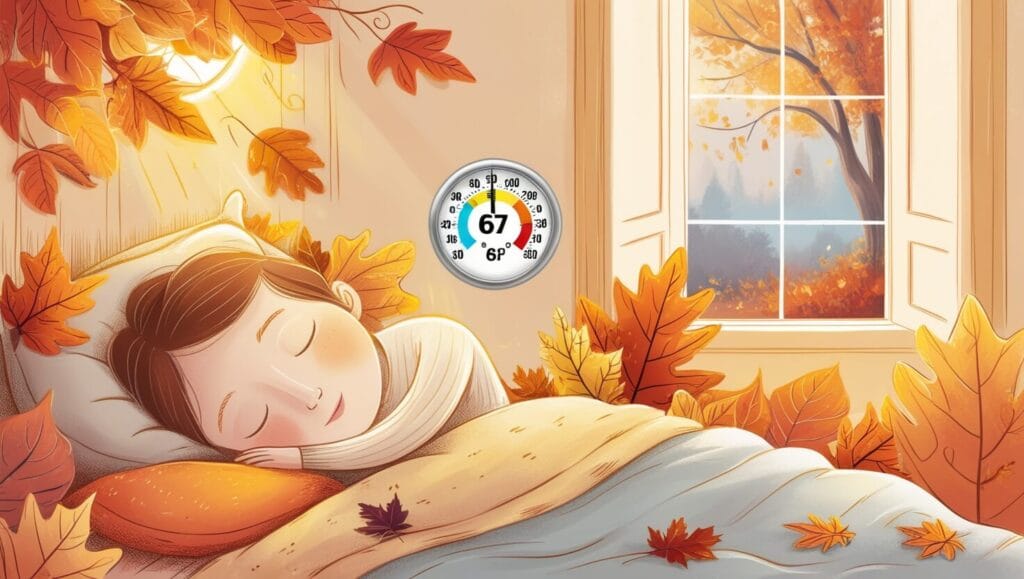
Different seasons require specific strategies for maintaining the ideal temperature for sleep. Let’s explore how to adjust your sleep environment throughout the year:
Summer Temperature Management
During warmer months, achieving the optimal room temperature for sleep often requires active cooling strategies. Research indicates that implementing these methods can improve sleep quality by up to 40% during hot weather:
- Use air conditioning strategically
- Employ ceiling fans for air circulation
- Consider cooling mattress technology
- Utilize moisture-wicking bedding
- Maintain proper ventilation
Winter Temperature Management
During colder months, maintaining the optimal room temperature for sleep presents different challenges. While it might seem cozy to keep your bedroom warm, research shows that slightly cooler temperatures still provide the best environment for quality sleep.
Winter Temperature Strategies: The key lies in creating a balance between comfort and the optimal temperature for sleep. Studies indicate that most people make the mistake of overheating their bedrooms during winter, which can significantly impact sleep quality. The ideal approach includes:
Heating Management:
- Program thermostats to begin cooling 2-3 hours before bedtime
- Maintain consistent room temperature throughout the night
- Use layered bedding for easy temperature adjustment
- Ensure proper humidity levels (30-50%)
- Address drafts while maintaining ventilation
Environmental Factors Affecting Sleep Temperature
Beyond basic temperature control, several environmental factors influence how we experience temperature during sleep:
Humidity Impact
Humidity plays a crucial role in how we perceive temperature and affects our body’s ability to maintain optimal temperature for sleep. Research shows that relative humidity between 30-50% provides the best conditions for quality sleep.
High Humidity Effects: When humidity rises above 60%, even the optimal room temperature for sleep can feel uncomfortable because:
- Sweat doesn’t evaporate efficiently
- Body temperature regulation becomes difficult
- Sleep quality decreases
- Risk of sleep disruption increases
- Overall comfort decreases
Low Humidity Challenges: Humidity below 30% can also disrupt sleep by causing:
- Dry nasal passages
- Throat irritation
- Skin discomfort
- Static electricity
- Increased susceptibility to respiratory issues
Practical Implementation Strategies for Sleep Temperature

Creating the Optimal Temperature Environment
Achieving and maintaining the optimal room temperature for sleep requires a systematic approach. Let’s explore proven strategies for creating the perfect sleep environment:
Bedroom Setup: The arrangement of your bedroom can significantly impact temperature regulation. Research shows that proper room setup can improve temperature management by up to 30%. Consider these factors:
Ventilation Optimization:
- Position beds away from direct air flow
- Ensure proper air circulation patterns
- Remove obstacles blocking vents
- Consider window placement
- Optimize door positioning for airflow
Smart Technology Integration: Modern technology offers numerous tools for maintaining the optimal temperature for sleep:
Automated Climate Control:
- Smart thermostats with sleep schedules
- Temperature monitoring systems
- Humidity control devices
- Connected fan systems
- Climate tracking apps
Common Temperature Regulation Mistakes
Through extensive research on sleep temperature, scientists have identified several common errors that people make when trying to maintain optimal room temperature for sleep:
Overcompensation: Many people overcompensate for temperature discomfort by:
- Setting temperatures too extreme
- Making frequent adjustments
- Ignoring natural body rhythms
- Using too many blankets
- Relying too heavily on artificial heating/cooling
Temperature Fluctuations: Sudden temperature changes can significantly disrupt sleep. Research shows that maintaining stable temperatures throughout the night improves sleep quality by up to 40%.
Advanced Temperature Optimization for Sleep
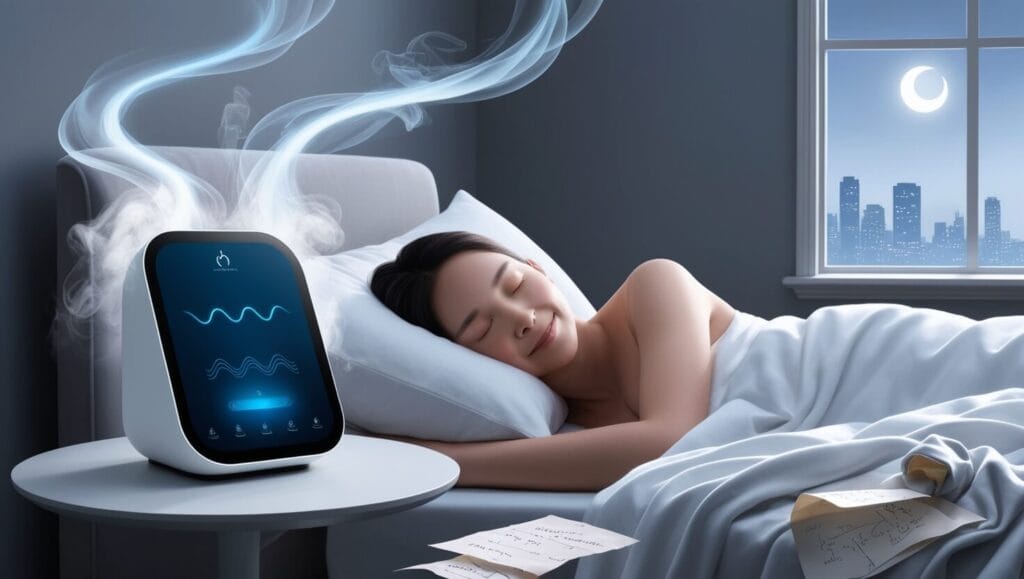
Individual Temperature Variations
While research establishes general guidelines for optimal room temperature for sleep, individual needs can vary. Understanding your personal temperature preferences while staying within the scientifically proven range becomes crucial for optimizing sleep quality.
Age-Related Temperature Needs: Different age groups require slightly different temperature considerations for optimal sleep:
Infants and Young Children: Research indicates that younger individuals often benefit from slightly warmer sleeping environments:
- Optimal temperature range: 68-72°F (20-22°C)
- More consistent temperature maintenance
- Gradual temperature adjustments
- Regular monitoring needed
- Additional consideration for bedding
Adults: The standard optimal temperature for sleep applies most directly to adults:
- Best range: 65-68°F (18-20°C)
- Natural cooling process support
- Consistent temperature maintenance
- Regular assessment of comfort
- Seasonal adjustments as needed
Elderly: Older adults often require slightly warmer temperatures for comfortable sleep:
- Recommended range: 66-70°F (19-21°C)
- More gradual temperature changes
- Additional warmth considerations
- Regular comfort assessment
- Enhanced monitoring systems
Special Circumstances
Certain conditions require specific modifications to the optimal room temperature for sleep:
Medical Conditions: People with certain health conditions might need temperature adjustments:
- Thyroid disorders
- Circulation problems
- Respiratory issues
- Autoimmune conditions
- Pain management needs
Long-term Benefits of Optimal Sleep Temperature
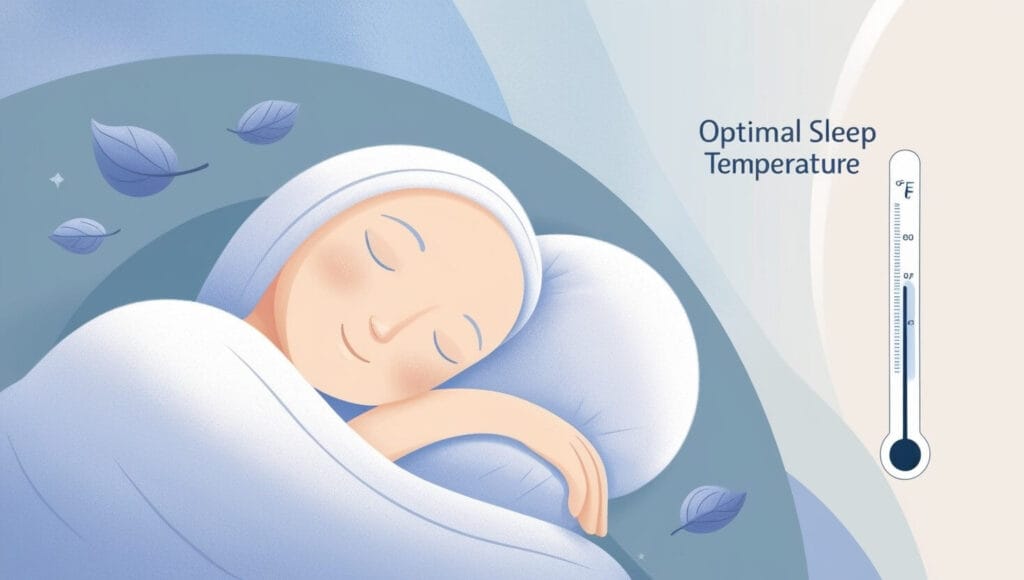
Maintaining the proper temperature for sleep consistently over time leads to numerous health benefits that extend far beyond just better sleep. Research has documented significant improvements in various aspects of health and well-being.
Physical Health Benefits
When you maintain the optimal room temperature for sleep over extended periods, your body experiences several positive changes:
Metabolic Improvements: Research shows that sleeping in the proper temperature range enhances metabolic function:
- Improved glucose regulation
- Enhanced fat metabolism
- Better appetite control
- Increased energy efficiency
- Improved weight management
Immune System Function: Consistent optimal sleep temperature supports immune health through:
- Enhanced immune cell production
- Better inflammatory response
- Improved recovery processes
- Stronger disease resistance
- More efficient healing
Mental Health and Cognitive Benefits
The impact of proper sleep temperature extends to brain function and mental health:
Cognitive Performance: Studies demonstrate that maintaining optimal temperature for sleep leads to:
- Better memory consolidation
- Improved learning capacity
- Enhanced problem-solving abilities
- Sharper focus and attention
- Reduced mental fatigue
Emotional Regulation: Proper sleep temperature contributes to:
- More stable mood patterns
- Reduced anxiety levels
- Better stress management
- Improved emotional resilience
- Enhanced psychological well-being
Temperature Optimization for Different Sleep Disorders
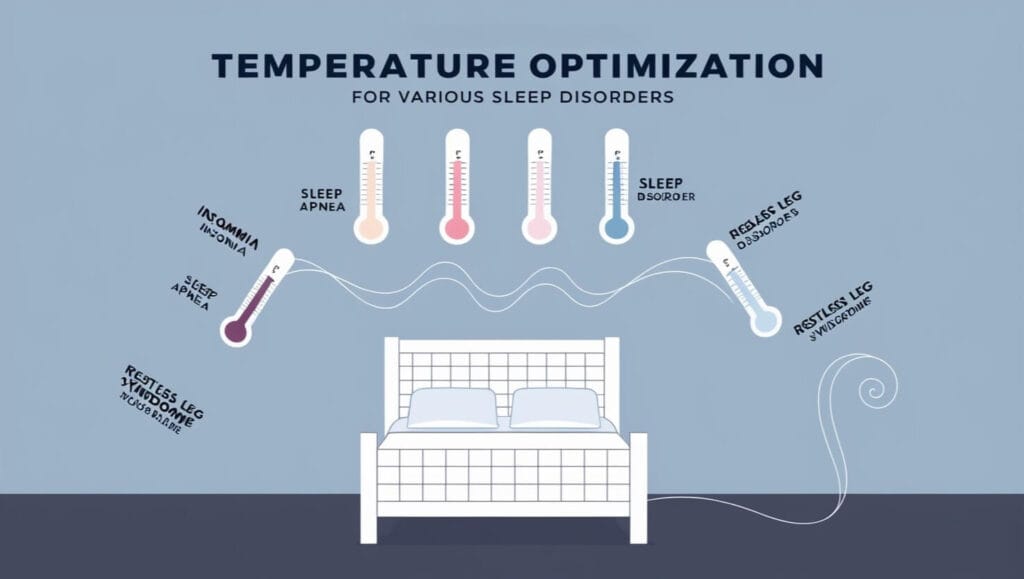
Understanding how temperature affects various sleep disorders can help optimize treatment and management strategies. The relationship between sleep temperature and sleep disorders is complex, with different conditions requiring specific temperature considerations for optimal management.
For those suffering from insomnia, maintaining precise temperature control becomes particularly crucial. Research indicates that individuals with insomnia often have disrupted thermoregulation, making them more sensitive to temperature fluctuations. When managing insomnia, it’s especially important to maintain the optimal room temperature for sleep consistently throughout the night, with particular attention to the initial temperature drop that helps trigger sleep onset.
Sleep apnea patients may benefit from slightly cooler temperatures than the standard optimal temperature for sleep. Studies show that cooler environments can help reduce inflammation in the airways and potentially decrease the frequency of breathing interruptions. However, the temperature shouldn’t be so cold that it causes discomfort or creates tension in the respiratory system.
Temperature Considerations for Athletic Recovery
Athletes and active individuals have unique temperature needs for optimal sleep and recovery. The relationship between exercise, body temperature, and sleep quality requires special attention to temperature management strategies.
Post-training temperature regulation becomes particularly important for optimizing recovery during sleep. Athletes often have elevated core temperatures following evening training sessions, which can interfere with the natural temperature drop needed for quality sleep. Creating a sleep environment with precise temperature control helps counteract this elevated body temperature and supports the recovery process.
Urban Living and Temperature Management

Living in urban environments presents unique challenges for maintaining optimal sleep temperature. City dwellers often face obstacles such as limited control over heating and cooling systems, external heat sources, and restricted ventilation options.
For apartment dwellers, managing sleep temperature might require creative solutions. The heat retention in urban buildings, especially in upper floors, can make maintaining the optimal temperature for sleep particularly challenging. Solutions might include:
Creating microclimate zones within your sleeping space becomes essential when you have limited control over building-wide temperature systems. This might involve using localized cooling or heating solutions, strategic air circulation, and carefully planned insulation strategies to maintain the ideal temperature for sleep despite external challenges.
Advanced Bedroom Design for Temperature Optimization
Creating the perfect sleep environment extends beyond simply setting a thermostat. The physical design and arrangement of your bedroom plays a crucial role in maintaining the optimal room temperature for sleep. Through careful consideration of various design elements, you can create a space that naturally supports ideal sleep temperatures.
Window placement and treatment deserve particular attention when optimizing bedroom temperature for sleep. South-facing windows often introduce excess heat during the day, which can linger into the evening hours. Installing appropriate window treatments, such as cellular shades or thermal curtains, helps manage this heat gain while providing options for temperature regulation throughout different seasons.
The vertical temperature stratification in bedrooms can significantly impact sleep quality. Hot air rises, creating temperature variations between floor and ceiling level that can affect sleep. Understanding this principle helps in arranging your sleeping space effectively. Bed height, fan placement, and ventilation strategies should all take this natural temperature variation into account.
Temperature Adaptation Strategies for Couples

Sharing a bed presents unique challenges for maintaining optimal sleep temperature, as individual temperature preferences can vary significantly. Research shows that partner temperature preferences can differ by as much as 3-4 degrees Fahrenheit, making it crucial to develop strategies that accommodate both individuals’ needs.
Dual-zone bedding systems have emerged as a valuable solution for couples with different temperature preferences. These systems allow each partner to maintain their ideal sleep temperature without compromising their partner’s comfort. From split duvets to advanced climate-controlled mattress pads, various options exist for creating personalized temperature zones within the same bed.
Travel and Sleep Temperature
Maintaining optimal sleep temperature while traveling presents unique challenges that require specific strategies. Hotel rooms, different climate zones, and varying altitude levels all impact how we experience temperature during sleep. Developing a comprehensive approach to temperature management while traveling can significantly improve sleep quality away from home.
High-altitude locations require special consideration for sleep temperature regulation. The thinner air at high altitudes affects both body temperature regulation and sleep quality. Travelers often need to adjust their typical optimal sleep temperature preferences when staying at higher elevations, usually preferring slightly warmer temperatures to compensate for the physiological changes that occur at altitude.
Working with Limited Temperature Control
Many people face situations where they have minimal control over their sleep environment temperature, such as in older buildings, shared living spaces, or temporary accommodations. Understanding how to optimize sleep quality within these constraints becomes crucial for maintaining healthy sleep patterns.
In buildings with centralized heating or cooling systems, residents often have little direct control over temperature settings. In these situations, developing a layered approach to temperature management becomes essential. This might involve using multiple bedding layers that can be easily adjusted throughout the night, strategically placing fans for air circulation, and utilizing techniques for creating microenvironments within the broader room temperature.
Temperature fluctuations throughout the night can significantly impact sleep quality, particularly in buildings with older or less efficient climate control systems. Learning to anticipate and compensate for these changes helps maintain more consistent sleep temperatures. This might involve setting up automated fan systems that activate at specific times or using temperature-regulating bedding materials that help maintain consistent comfort levels despite environmental changes.
Humidity and Temperature Interaction
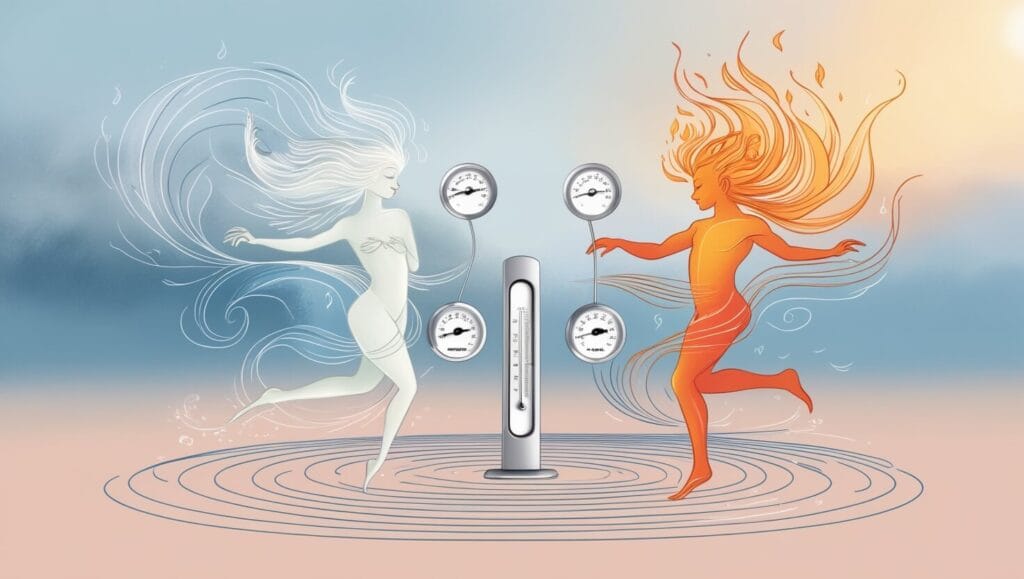
The relationship between humidity and perceived temperature significantly impacts sleep quality. Understanding this interaction helps in creating more effective sleep environments, even when the actual temperature remains within the optimal range for sleep. High humidity can make a room feel warmer than it actually is, while low humidity might create the sensation of cooler temperatures.
Managing humidity becomes particularly crucial in certain climates or seasons. In humid environments, dehumidification often proves as important as temperature control for maintaining comfortable sleeping conditions. Conversely, in very dry climates or during winter heating seasons, adding appropriate moisture to the air can improve sleep quality even when temperature remains constant.
Technology Integration for Temperature Optimization
Modern technology offers increasingly sophisticated solutions for maintaining optimal sleep temperature. Smart home systems can now learn individual sleep preferences and automatically adjust room conditions throughout the night. These systems might consider factors such as outdoor temperature, indoor humidity levels, and even individual sleep cycles when making temperature adjustments.
Future Innovations in Sleep Temperature Control
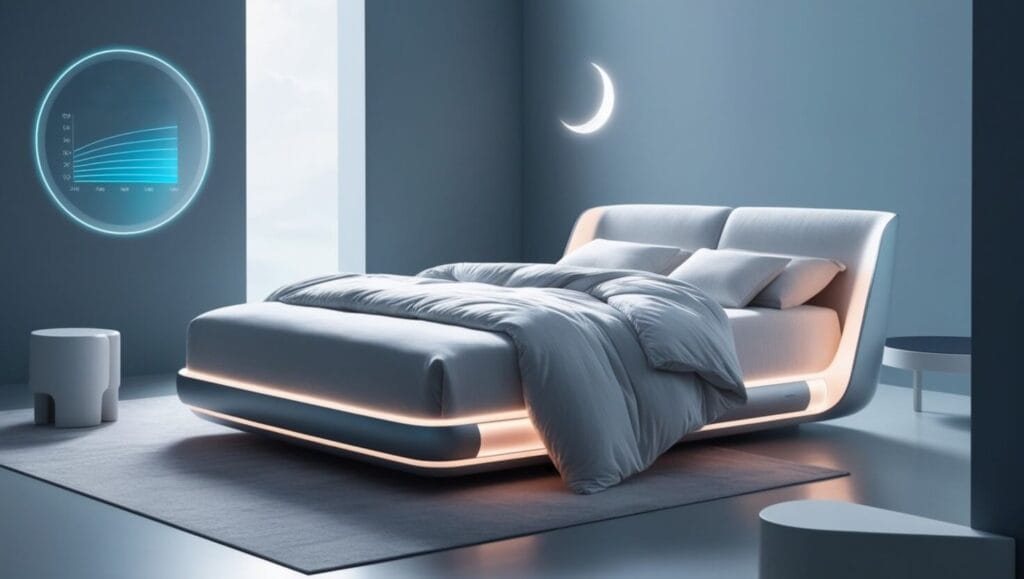
The field of sleep temperature optimization continues to evolve with new technologies and approaches:
Emerging Technologies
Smart Bedding Systems:
- Active temperature regulation
- Individual side control for couples
- Automatic adjustment based on sleep stages
- Integration with sleep tracking
- AI-powered optimization
Environmental Control Systems:
- Zone-based temperature management
- Predictive temperature adjustment
- Circadian rhythm synchronization
- Personalized climate profiles
- Advanced humidity control
Creating Your Optimal Sleep Temperature Environment

The science clearly demonstrates that maintaining the optimal room temperature for sleep plays a crucial role in achieving quality rest. While the ideal temperature range of 65-68°F (18-20°C) serves as a general guideline, understanding your personal preferences within this range and implementing appropriate temperature management strategies can significantly improve your sleep quality.
Remember that creating the perfect sleep temperature environment is an ongoing process that may require adjustments based on seasons, circumstances, and individual needs. Focus on consistency in your temperature management approach while remaining flexible enough to adapt to changing conditions. Whether dealing with urban living challenges, sharing a bed with a partner, or working with limited temperature control, there are always strategies available to help optimize your sleep environment.
Start by implementing basic temperature optimization strategies and gradually refine your approach based on what works best for you. Pay attention to how different temperatures affect your sleep quality and make adjustments accordingly. With proper attention to temperature management, you can create a sleep environment that supports deep, restorative rest night after night.


